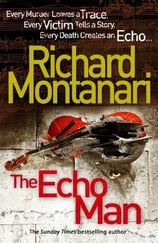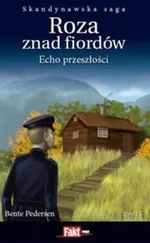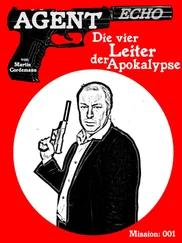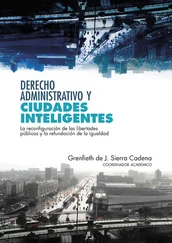‘Was. It was. Alice Emmeline Daunt. She died three years ago. She was eighty-four.’
Suzanne swallowed. ‘And she was born in 1921. She was the daughter of Jane Boyte, and her father was Michael Collins.’
‘Do you have a more sensible pair of shoes than the ones you’re wearing, Suzanne?’
‘Why?’
‘Because even in clement weather, digging is a very dirty business.’
‘You’re going to start digging today?’
‘Not personally. But I’ll have a team there by this afternoon. SOCOs, forensics, a mechanical digger, men with spades. You, if you so wish.’
‘You can move that fast?’
‘Spalding was either very unsavoury or incredibly accident-prone where propriety was concerned. That picture Jane Boyte took is highly suspicious. I don’t believe very much in coincidence. And if those women are there, I think they’ve waited long enough to be laid decently to rest. Don’t you?’
Suzanne turned the two pieces of the picture around, put them together and looked at the image there, at the grainy reality of turf torn and earth disturbed. ‘What’s particularly suspicious about it, Detective Inspector?’
‘The timing. The fact that it is there at all. Playboys like Spalding didn’t dig holes big enough to be seen from the air for fun or as a hobby. Unless he was nostalgic for the war and was digging himself a trench.’
‘What about the occupants of the house? Won’t the people living there object?’
‘There aren’t any people living there,’ Hodge said. ‘The house is Grade II listed and empty. It’s never really been successfully occupied. People don’t feel comfortable there. They say it is haunted.’
Suzanne stood. She was momentarily at a loss. ‘What should I do now?’
‘We’re close to Lord Street. You could do some window-shopping and then grab an early lunch. Then you should go back to your hotel and change out of that smart outfit you so courteously assembled for our appointment. Put on some practical clothes. Meet me at the site at two o’clock. Bring something to wear on your head. The sun is hot in June. And bring something to drink. We are in for a long day.’
Suzanne left the police station and walked along Lord Street. She felt that in a few days she had come to know Southport very well. The past kept breaking through into the present, but in a peculiar way it was that kind of place and the intrusion was only fitting. Once, she thought she glimpsed Jane Boyte staring at her from inside a chic department store. But when she looked again, it was just her own reflection, with her hair groomed, in the grey pencil skirt and tailored black jacket she had worn for her appointment with the old policeman.
She stopped at the Costa coffee shop. It was eleven o’clock, a busy coffee time, and there was a queue. She saw again the street sign in the Costa montage that reminded her of the home she shared in Lambeth with Martin Stannard. She wondered if she had seen Martin for the last time. She remembered their last awkward night together. She had been remote from him, cold with disapproval of the intended voyage. That disapproval had been fully vindicated. But she regretted her coldness deeply now. The invitation to share one another had been offered by neither of them. She hoped now with all her ardent heart to be given the chance to compensate for that.
She took her coffee to one of the tables on the pavement outside. Through the line of old trees on the kerb, she could see the pale splendour of the cenotaph. It was magnificent from here in its scale and simplicity, the seamless blocks of Portland stone shaped in two great, white edifices flanking a tall obelisk. She thought of Spalding standing in linen, switching his cane and paying mock homage to the dead while he teased Jane Boyte on the flagstones behind him. There was no one there now. The flagstones shifted in patterns of light and shade wrought by the canopy of trees and the sun through their summer leaves. Suzanne sighed and sipped coffee and shifted her attention to her own side of Lord Street. It was very crowded and bright with people in their summer attire. She realised that she was looking for Alice Daunt. But she knew she had seen the last of Alice, as she knew she had seen the last of her father, too.
There were five bodies, when they had done their digging. The remains were skeletal. It was dusk by the time they were done and the bones were bleached white by the big searchlights fighting the encroaching night and illuminating the scene. They were positioned sideways on in the attitude of jackknifing divers, the dead women, with their spines at the apex and their hands touching the feet of their neighbour. The significance of this human geometry was plain to see. The remains formed a gruesome pattern. It was the five-sided star, the pentagram. The killing had been a ritual. The purpose had been sacrificial. Suzanne wondered how the women had died.
‘Not well,’ Hodge told her. He looked a full decade older than he had in the bright sunshine of his office that morning. He was sipping coffee poured from a steel flask. ‘We won’t know the specifics until forensics have a proper look and we won’t get the full picture until the pathologist’s report. But judging from the abrasions plain on their neck bones, I would say that the women had their throats cut. My guess is that it was done with a saw-edged weapon, perhaps a German infantry bayonet Spalding kept as a memento from the war. My belief is that they bled to death where they lay and were arranged like this afterwards. But I’ve got no context for this kind of killing, to be honest with you. I’ve never seen anything like this in my entire professional life. And I hope to God I never do again.’
The women had been buried deep. The pentagram was twelve feet below the surface. It was why the police digging had taken so long. The circular pit they had gouged from the earth had needed to be shored up by poles and scaffolding planks banked behind the poles on their edges. Even with this revetting, the soil tried to bulge and break through. It was unstable, like a living organism trying to conceal itself. Little avalanches trickled through breaches and cracks in the planks down to the pit.
‘It was dug by hand, by shovel and pick, we can tell that much,’ Hodge said. ‘If it was dug by one man alone, then he had colossal strength. Carrying the women here would have been no burden to him. A man possessed of that kind of strength could have carried these poor wretches here two at a time.’
From the centre of the star formed by the dead women, they had retrieved a brass cylinder about three and a half feet long. It had been buried bound in oilcloth. The oilcloth had been very carefully removed. The cylinder was barely tarnished by its time under the earth. Suzanne had at first assumed it was a telescope. But its sides were parallel and it was not sectioned and it had a cap, on close inspection, that screwed on to protect and secure whatever it contained.
Everyone at the scene crowded round when the cap was unscrewed and the contents of the tube revealed. Suzanne watched in some anxiety. The whole operation was conducted with incredible delicacy but she was concerned anyway because by now she knew what the object was and she was afraid that it would simply crumble to nothing in the exposure to the white, halogen-lit air. The thought terrified her. This was sea air, harsh with ozone and salt. She clenched her fists and closed her eyes and murmured a prayer. But when she opened her eyes again what emerged, emerged intact.
She could imagine no more unprepossessing an object. It looked like a piece of broom handle. Except that it was almost petrified with age and, in the brilliance of the lights, you could see the faint indentations where the twine or rawhide of its grip had once been tightly wound.
Читать дальше












